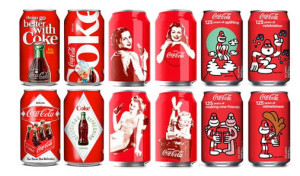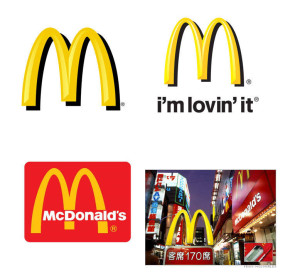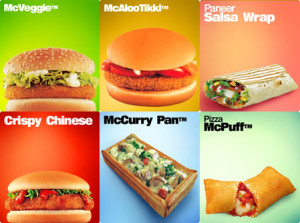GLEANING FOR MEANING!
Dedicated Addison Whitney employees gathered together early this Saturday morning at a farm in Midland, NC for Addison Whitney Helping Hands to GLEAN!
Now what exactly is Gleaning? According to Wikipedia, “Gleaning is the act of collecting leftover crops from farmers' fields after they have been commercially harvested or on fields where it is not economically profitable to harvest.” In ancient times, farmers would allow villagers to glean for self-sustainability. In modern times, humanitarian groups glean to deliver food to shelters and impoverished neighborhoods for their ultimate cause: to end societal hunger.
Addison Whitney partnered up with the Society of St. Andrew, a hunger relief nonprofit organization, to pick turnips and turnip greens. After three hours of picking turnips, dividing turnips and its greens, and loading them onto trucks, our clothes got muddy and our hands got dirty, but in the end it was all worth the while. The final count came to 2325 lbs of turnips, 1105 lbs of greens, with a total of 3430 lbs! Think about how many families this amount of food will feed! Event organizer Emily Hassell at Addison Whitney stated “This event was quite a success! I’m glad we were able to make such an impact with our gleaning efforts. It was refreshing to see people of all ages (3-50+) working as a team, and having fun in the outdoors.”
The amount of food that is wasted every year in the US can fill up “a 90,000 seat football stadium to the brim at least once every single day”, according to NaturalNews. So the next time you look down at the plate of food you are about to throw away, think about how many peoples’ lives you could have saved. Be resourceful in your food and donate to the community if you have a little extra.
Check out our pictures on Flickr @ https://www.flickr.com/photos/addisonwhitney
If you are interested in learning more about Gleaning or want to volunteer as a Gleaner, please visit https://www.endhunger.org/
Contributed by Tiffany Lan
Shopping for your Personal Brand

How many times have you heard “Those shoes are so you” or “That dress really suits your personality”? Personal style is a form of self-expression. Neon-colored tights may say “I’m a risk-taker.” An a-line skirt and a turtleneck may say “I’m conservative”. When we purchase pieces of clothing, we are defining our personal style. In a bigger picture, our personal style is but a small piece of our personal brand.
-
• It may be a cause you stand for. The CEO of TOMS Shoes created the “One for One” ideology for his company that for every pair of TOMS shoes sold, one pair would be donated to a person in need, specifically ones from third-world countries.
-
• It may be a passion you want to explore. Ken Jeong (best known for his role as Mr. Chow in The Hangover) actually has a medical degree from UNC Chapel Hill, but gave up being a doctor to pursue his love for stand-up comedy.
-
• It may be the image you want to portray. Lady GaGa is an extremist in our generation. Some would say she is “outrageous and weird”, but in fact it is her outrageousness and weirdness that inspires people to be unafraid to show who they truly are.
-
• It doesn’t have to be one aspect either; it can be a combination of many.
Contributed by: Tiffany Lan
What's in an Arch?
…McDonald’s Golden Arch of course! This familiar logo was designed in 1953 when Richard and Maurice McDonald built their first franchised outlet. It was originally used to symbolize the “M” for McDonald’s, but how little did we know that this simple Golden Arch would evolve into something much more.
McDonald’s has opened franchises in 123 countries around the world. In these 123 franchises, they may serve different items on the menu. Take a look at India:
They may even have different Ronald McDonald figures. Take a look at Thailand:
Again, this figure would only make sense in certain parts of the world. The food may change, the figures may change, even the portion sizes may change, but one thing will remain the same: the Golden Arches. That’s the power of a brand, of a logo, of a simple two looped symbol- it may be small, it may seem insignificant, but don’t underestimate its ability to reach and touch people all across world. I guess….that is what’s in an Arch.
Contributed by Tiffany Lan
RedaKai Has Come Alive!
It’s not often that Addison Whitney has the opportunity to name a toy or a game, but RedaKai is a perfect example of our rise to the challenge. Spin Master engaged Addison Whitney to create a name for what has become an animated television series, in a joint venture with Marathon Media, complemented by an innovative and uniquely designed trading card game. These stackable cards are made of clear plastic and feature images created by Lenticular printing, meaning that the cards appear animated as they are viewed from different angles. Additionally, Spin Master has announced plans to launch full franchise merchandise going beyond the card game.
The AW Verbal Branding team was asked to help reinvent the card aisle and rise above the typical boys’ action card games. After all, boys are not just playing a game; they are battling to ensure the safety and future of the universe. While being sure to communicate powerful and skilled, it was important to Spin Master for the name to have a somewhat foreign tone, specifically Japanese, one that would fit with the other games on the shelf. Another key direction was to include “Kai” as it serves as the basis for the franchise: it is the root of the mystical alien energy source, Kairu, and the lead character’s name, Ky Stax.
After group and individual brainstorming guided by strategic thinking and motivated by an overall excitement for this opportunity, RedaKai was created. It communicates the idea of being geared up and ready for battle. It serves as an inspiration to boys everywhere to accept the challenge to protect not just earth, but the entire universe.
Contributed by: Jenna Wise
World Expo: Nation Branding
To add to the previous blog post about nation branding, countries seem to be very interested in their reputations. They are making strides to manage their appearance in a globalized world. Countries realize that their reputation not only affects their tourism business, but also their economic stance in the marketplace. And where do countries go to brand themselves? Try the World Expo. It’s a hotspot for nation branding. Known as, “a wonderful playground of branding,” these fairs provide pavilions for each country to portray the best of its identity to the rest of the world. Kind of like a beauty contest for nations, or a tournament of cultures. Participating countries are eager to interact and impress visitors.
Another reason countries go to the Expo is to overcome negative stereotypes that may be harmful to their reputation. Social, economic, cultural or political issues from the past (like wars for example) are the main factors that shape the rest of the world’s perspective of a country. These stereotypes can be hard to break. On the other hand, stereotypes can be a good thing. With pre-conceived expectations, people have already made a connection with a nation, allowing easier engagement and interest.
Are the messages that these national pavilions send effective? It can be tricky because nations must be aware of the way they communicate with multiple audiences. They cannot just impress foreigners; they must also please their domestic audience. If communication between the two doesn’t correspond, there could be cause for dispute. Most natives see their pavilion as a source of national pride, but some others may see it unfavorably, especially if the focus is on creating a show for foreigners.
Student ambassadors that greet and guide visitors at their pavilions are an important part of a national brand. With their direct contact among visitors, they exhibit diplomacy, represent a physical presence for their country, and give a glimpse into the future of foreign relations.
There are many things to consider when managing a country’s image on a global scale. A solid nation-brand strategy requires much negotiation, compromise, and clear direction to be successful.
Contributed by Emily Hassell
When does a Newly-Merged Portfolio become a “Dysfunctional Family?”
There is always excitement and discomfort with change. Your portfolio of products or services may change gradually through organic growth or expand suddenly due to a merger or acquisition. There is a prayer you can manage portfolio change with care in the former case, but sudden growth always raises key challenges.
When Portfolios Merge
There is usually a sound business strategy behind a corporate merger. This could include expanding an identical product or service into an enlarged geographic footprint or expanding an array of products within the same general product category. The closer the add-on products are to the original, the easier it will be for company employees and customers (new and merged) to embrace the new products.
However, let’s consider the corporate combination (whether small or large scale) that introduces whole new categories of merchandise or service to the buying audiences of both former entities. Now HERE’s where internal AND external brand positioning mind-bending can occur.
Questions can start to creep in that could well affect the overall corporate brand, its place in the cosmos, its reason for being. This may sound overly dramatic, but altering a portfolio mix will have a direct functional impact on every level of the organization. Some might be minor, like adding a few pages to a catalogue or web site, or redrafting the organizational chart. But, unless strategic clarity is applied to the change, the rationale and subsequent merger execution could also never quite congeal with employees and customers.
Who Needs to Know What
WHY did this merger happen, to whom does it make the most sense, who benefits and how? A logical explanation must be given to all employee groups. And not just once, but as an ongoing reminder to sustain the pain of adjustment they will be enduring. You can simply call it vigilant internal communications, but, for it to be truly successful, it should really be a long term, internal MARKETING campaign. Nothing less than the integrity of the overall, master brand is at stake.
Certainly, external audiences, especially all current and potential customer groups, should receive clear and consistent messages about why these new products are now part of the corporation’s offering. It should be seen as a rationally expanding family group, with next to none of the externally visible dysfunction any newly-blended family inevitably experiences.
Going Forward
THEN, how you avoid purchase decision-making confusion or paralysis from that point on has a lot to do with how the portfolio is structured and how products are named. Pay close attention to what everything is called. If names need to change, allow adequate time for all involved to absorb and become familiar with the change. Blending companies is just as delicate a task as merging families… just a heck of a lot larger!
Contributed by Bev Brandt
What is Employer Branding?

It’s easy for you to start talking about the products or services your company offers, but how do you talk about your company itself? It’s not enough to promote one of your own brands, companies must brand themselves as employers.
Brett Minchington, Chairman/CEO of Employer Brand International, defines your employer brand as “the image of your organization as a ‘great place to work’ in the mind of current employees and key stakeholders in the external market (active and passive candidates, clients, customers and other key stakeholders). The art and science of employer branding is therefore concerned with the attraction, engagement and retention of initiatives targeted at enhancing your company's employer brand."
Companies brand themselves as employers to convey to the world why their workplace is appealing in hopes of attracting good workers, which is especially important during the economic slowdown. As companies cut costs, getting the best people in the right jobs is even more crucial. Additionally, as companies expand into foreign markets competition for skilled workers increases.
While there are many ways to approach employer branding, one of the most important things is knowing who you are. Create a brand based on your company’s mission and objectives. The book Built to Last: Successful Habits of Visionary Companies demonstrates that companies with consistent, distinctive and deeply held values tend to outperform those companies with a less clear and articulated ethos. Product lines, profit strategies, cultural tactics, and organization structure can change – but a core ideology should not.
Your employer brand is who you are, and how others—both employees and potential candidates -- view your company. Communicating your organization's mission and values will attract and engage the like-minded talent who will directly affect your bottom line.
Same Product, Different Name


You're making a sandwich and go into your fridge to pull out a jar of Hellmann's Mayonnaise...or is it Best Foods? Well, it depends where you are making this sandwich. If you live east of the Rockies, you're spreading Hellmann's Mayonnaise on your bread. But, move west of the Rockies and you're using Best Foods.
Both brands have similar logos, websites and even taglines. Seems strange doesn't it? So, why would a company create or give a different brand name for the same product in a different geography? We've compiled some common reasons you may find identical products with differing names.
MERGERS and ACQUISITIONS: It is not uncommon for mergers or buyouts to occur. Despite an acquisition, many brands are well-known--sometimes even better-known than the new parent brand-- and retain strong brand equity. When the name of national brand is strong, the original name is often kept, even when an international visual identity is adopted. The same applies on local or regional levels. For example, when Richard Hellmann Inc. was acquired by Best Foods, Inc., Hellmann's Mayonnaise sold east of the Rockies and Best Foods Mayonnaise sold west.
LEGAL: Whenever you create a name, there is always the possibility that someone else somewhere else has already thought of it. Often a local brand already owns the legal right to use a name, forcing a multinational company to create another name. This is particularly true in the pharmaceutical industry, which is why the same medication may have a different name in France than it does in the United States.
LANGUAGE: Words and phrases translate differently into different languages. Sometimes a brand's name may be inappropriate or even misleading in a specific language, potentially hurting sales. Depending on the product it can be funny, or it can be horribly ironic; one example of both these instances is the Chevy Nova. “No va” in Spanish means doesn’t go…perhaps not the best name for a car.
How do you avoid any naming mishaps in different regions? Research is essential in developing a name with long-term staying power. Copyright and trademark screening will eliminate name candidates in existence and linguistic evaluations will ensure you not cursing out someone's mother in another country. Doing research ahead of time will save you the time and money early on if you find your name already exists, and may even spare you embarrassment overseas.
What is Nation Branding?
Canada, South Korea and Tanzania all walk into a marketing agency...no this isn't a bad joke. It's nation branding. While candy bars, soft drinks and sneakers are brands commonly seen advertised, countries are now branding themselves like products on a shelf.
Nation branding is a practice which aims to measure, build and manage the reputation of countries. In the late 1990s Simon Anholt, a pioneer in the field, first argued that places and nations themselves are brands.
When you buy a Kate Spade purse you're not just buying a handbag. You're buying an experience, recognition and all of the associations that come with the Kate Spade name. According to Anholt's research, nation branding works the same way.
For example, if deciding between a product made in Mexico and a product made in Japan, which would you choose and why? Countries have reputations. The way a country is perceived globally impacts much more than your next vacation. It can significantly impact varying aspects of a country's economic landscape.
While nations have had reputations for centuries those reputations become increasingly important in our global marketplace and nations are trying to control them more than ever.
So just how do you brand a nation? Some tourism boards air commercials, while others develop catchy slogans. But nation branding is so much more than an advertisement. It means consistent policies and making sure that government agencies are in alignment and really living the brand.
Like any other type of branding, nation branding can swing two ways: Positive brands can stick for a long time, but once a country is "branded" negatively it can be very difficult to undo the damage. Unlike a consumer product, a damaged Nation brand could have a much more severe consequence than lagging 4th quarter sales.
New Look, Classic Taste: Coca-Cola Follow Up

Keeping a brand fresh while still maintaining its integrity can be challenging. While an updated look could modernize your brand or help it stand out in a crowded marketplace, it is important not to lose sight of who you are and what your brand stands for. Imagine just how challenging refreshing your brand would be it were 125 years old. As Coca-Cola celebrates this milestone anniversary, Coca-Cola and Diet Coke cans are getting a fresh new look.
Rolling out in September, revamped Diet Coke cans feature a magnified segment of the Diet Coke logo where the “D” of Diet rests on top of the “k” of Coke. This mod design does not reveal the brand’s complete name. I guess when you’re the world’s best-selling diet soda you don’t have to worry about partial name recognition.

Not to be outshone by its calorie-free counterpart, design firms around the world have been creating special anniversary packaging for Coca-Cola’s flagship beverage. Check out ADWEEK’s collection of designs from Britain, Hong Kong and Serbia.
Coca-Cola found a nice balance with this campaign. One quintessential beverage got a sleek, edgy design and the company still embraces and celebrates its history in a fun and visually-appealing way.
What other brands have you seen celebrate milestones with special packaging?





